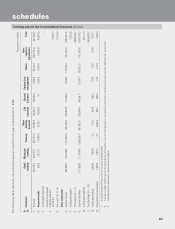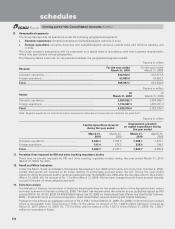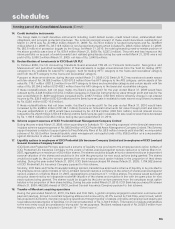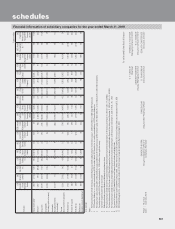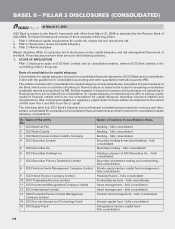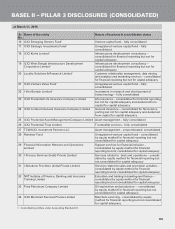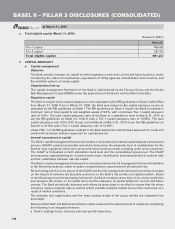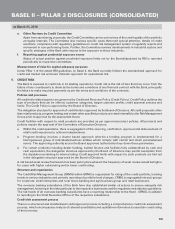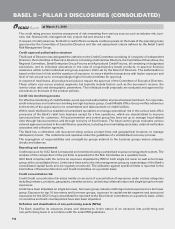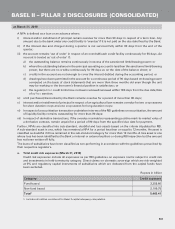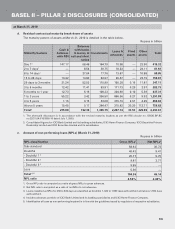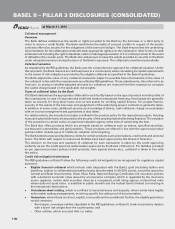ICICI Bank 2010 Annual Report Download - page 172
Download and view the complete annual report
Please find page 172 of the 2010 ICICI Bank annual report below. You can navigate through the pages in the report by either clicking on the pages listed below, or by using the keyword search tool below to find specific information within the annual report.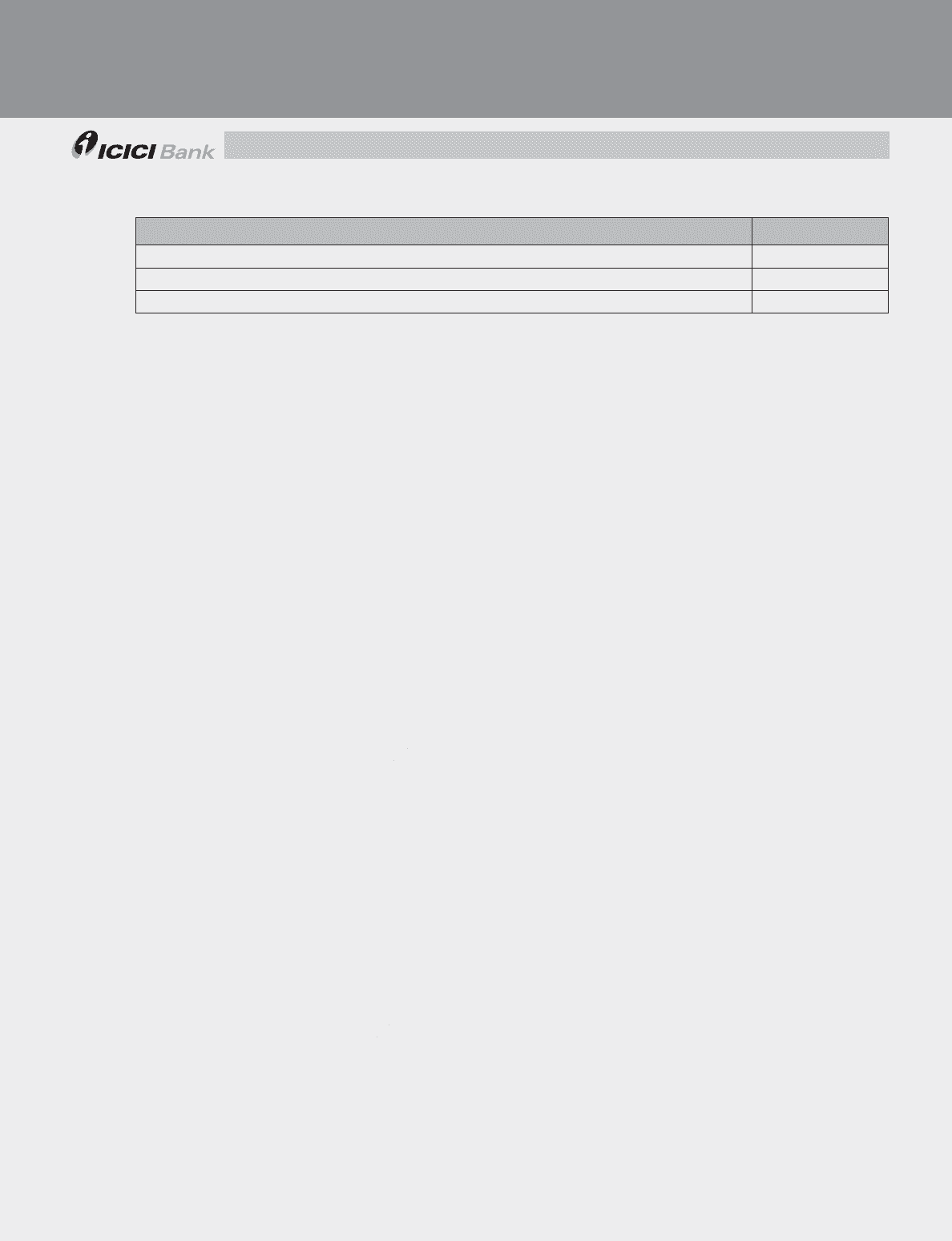
F92
BASEL II – PILLAR 3 DISCLOSURES (CONSOLIDATED)
e. Total eligible capital (March 31, 2010)
Rupees in billion
Amount
Tier-1 capital 459.68
Tier-2 capital 221.54
Total eligible capital 681.22
3. CAPITAL ADEQUACY
a. Capital management
Objective
The Bank actively manages its capital to meet regulatory norms and current and future business needs
considering the risks in its businesses, expectation of rating agencies, shareholders and investors, and
the available options of raising capital.
Organisational set-up
The capital management framework of the Bank is administered by the Finance Group and the Global
Risk Management Group (GRMG) under the supervision of the Board and the Risk Committee.
Regulatory capital
The Bank is subject to the capital adequacy norms stipulated by the RBI guidelines on Basel II with effect
from March 31, 2008. Prior to March 31, 2008, the Bank was subject to the capital adequacy norms as
stipulated by the RBI guidelines on Basel I. The RBI guidelines on Basel II require the Bank to maintain a
minimum ratio of total capital to risk weighted assets of 9.0%, with a minimum Tier-1 capital adequacy
ratio of 6.0%. The total capital adequacy ratio of the Bank at a standalone level at March 31, 2010 as
per the RBI guidelines on Basel II is 19.41% with a Tier-1 capital adequacy ratio of 13.96%. The total
capital adequacy ratio of the ICICI Group (consolidated) at March 31, 2010 as per the RBI guidelines on
Basel II is 19.15% with a Tier-1 capital adequacy ratio of 12.92%.
Under Pillar 1 of the RBI guidelines on Basel II, the Bank follows the standardised approach for credit and
market risk and basic indicator approach for operational risk.
Internal assessment of capital
The Bank’s capital management framework includes a comprehensive internal capital adequacy assessment
process (ICAAP) conducted annually and which determines the adequate level of capitalisation for the
Bank to meet regulatory norms and current and future business needs, including under stress scenarios.
The ICAAP is formulated at both standalone bank level and the consolidated group level. The ICAAP
encompasses capital planning for a certain time horizon, identification and measurement of material risks
and the relationship between risk and capital.
The Bank’s capital management framework is complemented by its risk management framework (detailed
in the following sections), which includes a comprehensive assessment of all material risks.
Stress testing which is a key aspect of the ICAAP and the risk management framework provides an insight
on the impact of extreme but plausible scenarios on the Bank’s risk profile and capital position. Based
on the Board-approved stress testing framework, the Bank conducts stress tests on its various portfolios
and assesses the impact on its capital ratios and the adequacy of capital buffers for current and future
periods. The Bank periodically assesses and refines its stress tests in an effort to ensure that the stress
scenarios capture material risks as well as reflect possible extreme market moves that could arise as a
result of market conditions.
The business and capital plans and the stress testing results of the group entities are integrated into
the ICAAP.
Based on the ICAAP, the Bank determines its capital needs and the optimum level of capital by considering
the following in an integrated manner:
z Bank’s strategic focus, business plan and growth objectives;
at March 31, 2010



